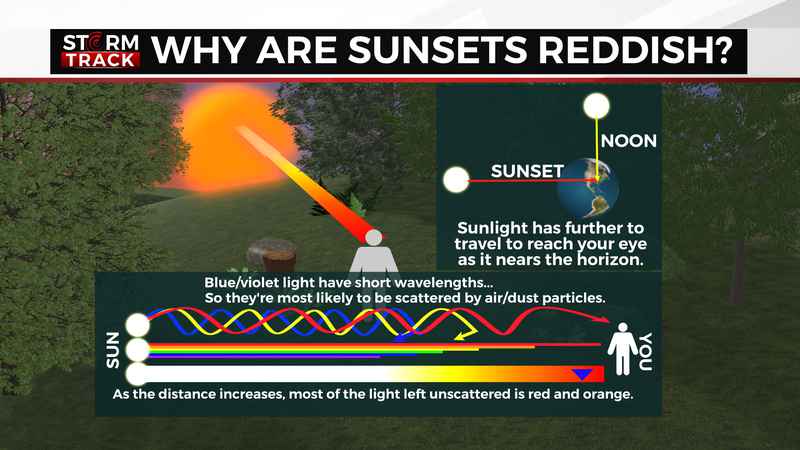Weatherz School: Why skies turn red

Nothing quite measures up to a stunning sunset. Before the sky becomes a black void, we’re often treated to a brilliant display of reds and oranges. Let’s break down why that is.
As the sun approaches the horizon, sunlight has further to travel to reach your eye. This is where the visible spectrum comes into play. Blue and violet light have short wavelengths, so they’re most likely to be scattered by air and dust particles. Orange and red, however, have long wavelengths. As the distance increases, red is what we’re left with.
Let’s apply our visible spectrum knowledge to a common phrase in weather folklore. Red skies in the morning, sailor’s take warning; red skies at night, sailor’s delight.
The sun rises in the east, and in general, storms approach from the west. Scattering leads to long wavelength red reaching the clouds. That red is then reflected back to us, warning of an approaching storm. The opposite applies to sunset. As the storm retreats to the east, red light is reflected off of the fleeting clouds. Overall, this piece of weather folklore holds up scientifically.